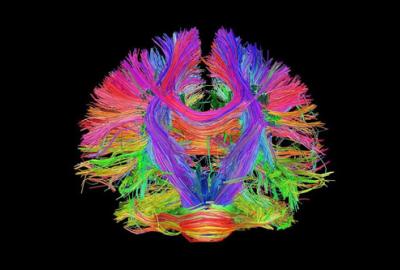This course, arranged by EPFL and also available as a MOOC on edX, aims for a mechanistic description of mammalian brain function at the level of individual nerve cells and their synaptic interactions. You will learn about topics such as the biophysical mechanisms of electrical signalling in neurons, neuronal computations and the synaptic mechanisms underlying them, as well as the networks which support sensory perception, sensorimotor integration, and learning.
Cellular Mechanisms of Brain Function
This lesson provides an introduction to the course Cellular Mechanisms of Brain Function.
This lesson introduces the composition of the cell membrane.
In this lesson you will learn about ion channels and the movement of ions across the cell membrane, one of the key mechanisms underlying neuronal communication.
This lesson covers membrane potential of neurons, and how parameters around this potential have direct consequences on cellular communication at both the individual and population level.
This lesson covers the spatiotemporal dynamics of the membrane potential.
In this lesson you will learn about neurons' ability to generate signals called action potentials, and biophysics of voltage-gated ion channels.
This lesson discusses voltage-gating kinetics of sodium and potassium channels.
In this lesson, you will learn about the ionic basis of the action potential, including the Hodgkin-Huxley model.
This lesson delves into the specifics of how action potentials propagate through individual neurons.
This lesson presents the typical setup, equipment, and solutions used in whole-cell recording of neurons.
This lesson provides an introductory overview to synaptic transmission and associated neurotransmitters.
In this lesson, you will learn about neurotransmitter release in the presynaptic specialization.
This lecture presents the current understanding of presynaptic short-term dynamics and plasticity.
This lesson covers synaptic modulation through diffusing neurotransmitters.
In this lesson you will learn about investigating the structure of synapses with electron microscopy.
This lecture gives an overview of glutamatergic transmission.
This lesson discusses glutamate release after an action potential, and the resulting post-synaptic potentials.
In this lesson, you will learn about glutamatergic excitatory neuronal circuits.
This lesson goes into the mechanisms behind changes in synaptic function created by learning.
This lesson gives an overview of neurons' dendritic spines and their function.
This lecture provides an introduction GABAergic inhibition and its receptors.
This lesson takes a closer look at GABA_A receptor mediated fast inhibition.
This lecture focuses on how benzodiazepines act on GABA_A receptors.
This lesson discusses long-range inhibitory connections in the brain, with examples from three different systems.
In this lesson, you will learn about GABAergic interneurons and local inhibition on the circuit level.








